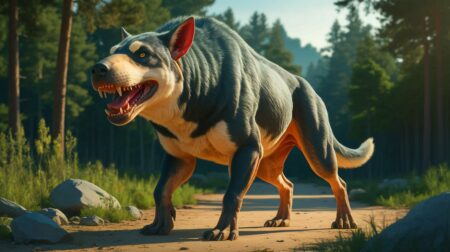| IN A NUTSHELL |
|
The origin of life on Earth is a captivating mystery that has intrigued scientists for generations. While Earth is approximately 4.5 billion years old, life emerged just a few hundred million years later. But where did it come from? A groundbreaking study by an international team of scientists offers surprising insights. Their research suggests that the Last Universal Common Ancestor (LUCA), the final step in the evolution of life on our planet, could be far older than previously thought. This revelation could redefine our understanding of life’s beginnings and the intricate web of evolution that connects all living organisms.
LUCA: The Parent of All Living Beings
Understanding LUCA, the common ancestor of all life forms, is crucial to grasping the significance of this discovery. LUCA is the progenitor of every living organism on Earth, from microscopic bacteria to blue whales, plants, and humans. It was a prokaryotic organism, a simple cell without a nucleus, existing around 4 billion years ago. Despite its simplicity, it was capable of reproduction, feeding, and interacting with its environment, laying the groundwork for all life as we know it.
Until now, scientists believed LUCA emerged around 3.8 billion years ago, shortly after Earth’s formation. However, under the guidance of paleo-geneticist Edmund Moody from the University of Bristol, researchers have pushed this timeline back by approximately 400 million years. This suggests that LUCA existed about 4.2 billion years ago, opening a new chapter in the story of life’s origins.
Water appeared just 100 million years post-Big Bang—A mind-bending rewrite of cosmic history
How Was LUCA’s Age Determined?
To determine LUCA’s age, scientists employed a sophisticated method known as phylogenetic analysis, which examines the evolution of genes across various species. As species evolve, they undergo genetic mutations—changes in DNA sequences—that are passed down through generations. These mutations typically occur at a slow pace but accumulate over time.
Researchers used these mutations as a “molecular clock.” By comparing the genes of current species, such as humans, bacteria, and plants, they traced back the evolution of these species to pinpoint when they diverged from a common ancestor. This involved measuring the genetic differences that accumulated over time. The greater the differences, the older the common ancestor.
Declining Food Enjoyment in the U.S. and Its Impact on Health
With these divergences identified, scientists used a mathematical model to estimate when these mutations began appearing. This enabled them to calculate the period during which LUCA, the shared ancestor of all life, lived—about 4.2 billion years ago, much earlier than prior estimates.
What Did LUCA Look Like?
Scientists have endeavored to understand what this primitive organism looked like and the environment it inhabited. Although no LUCA fossils exist, researchers have formed hypotheses based on the common traits of current living beings. Despite being a simple prokaryote, LUCA possessed surprisingly complex traits for its time.
“Nature’s hidden empire”: This massive, fungus-like organism could redefine the entire tree of life
It is now hypothesized that LUCA had a rudimentary immune system, capable of defending against external threats like viruses. It is fascinating to consider that such a simple organism could interact with its environment in a sophisticated manner, long before multicellular organisms emerged.
LUCA likely thrived in an aquatic environment, rich in metals and chemicals, under extreme temperature and pressure conditions. The study also suggests that LUCA was part of an early ecosystem where its waste products nourished other microbes, creating a natural recycling cycle. These early microorganisms were essential to Earth’s life balance, long before more complex life forms appeared.
A Gateway to Our History
By pushing LUCA’s emergence back to 4.2 billion years ago, this study enhances our understanding of life’s origins on Earth. LUCA was not just a simple cell, but the ancestor of a thriving biodiversity that has evolved over billions of years. This discovery highlights the importance of genetics and evolutionary studies in comprehending where we come from and the conditions in which life emerged and diversified.
Many questions remain. One pressing question is how LUCA first appeared. Theories about life’s origins, such as the primordial soup hypothesis or hydrothermal vent hypothesis, exist, but no definitive answers have been found. Yet, it is certain that LUCA played a central role in terrestrial evolution. Every life form, from the simplest bacteria to modern humans, descends from this ancestor.
As we continue to unravel the mysteries of LUCA and life’s beginnings, what new revelations await us in the vast history of our planet’s evolution?
Did you like it? 4.4/5 (30)









Wow, 4.2 billion years ago? That’s mind-blowing! 🌍✨
Does this mean we are all basically ancient bacteria? 🤔
Thank you for this fascinating read. The complexity of life never ceases to amaze me!
I find it hard to believe that all life comes from a single ancestor. Can someone explain how this is possible?
So, LUCA was like the ultimate survivor, huh? 💪
Is this research peer-reviewed? Would love to read more about the methodology.